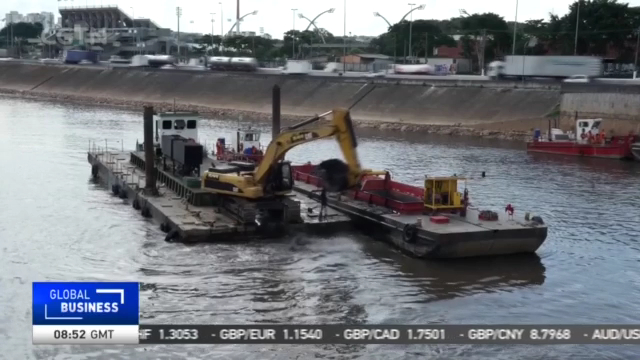
17:22, 21-Mar-2019
Saving the Tiete: Sao Paulo launches project to clean up river
Updated
17:20, 24-Mar-2019
02:42

Latin America's rivers are some of the most polluted in the world. The World Bank says 70 percent of the region's waste water goes untreated. In Brazil, sewage from millions of Sao Paulo residents is dumped directly into the Tiete River. But a major expansion of the city's sewer system is underway to help alleviate the problem. CGTN's Paulo Cabral has the details from Brazil.
The Tiete is Sao Paulo's main river, but it's far from a picturesque tourist draw. Instead, it's little more than a huge open sewer biologically dead. Fish are long gone. The water, polluted to the point of having nearly zero oxygen.
PAULO CABRAL SALESOPOLIS, BRAZIL "People used to seeing and smelling the poisonous Tiete River in Sao Paulo may be amazed to realize that a three hour drive is enough to reach this spot and drink pure, fresh water directly from the Tiete source. And it's really good."
These springs were discovered and officially declared the source of the Tiete River in 1954. Later the area was made into a state park. Drinking and taking home samples of the water is a must for most visitors.
After this stream - which flows at about one and a half liters per second - leaves the source, it gathers strength and volume as it cascades down the mountains of the Serra do Mar and remains clean for about 70 kilometers - until it reaches the metropolitan area of Sao Paulo, with over 20 million inhabitants. Their waste is dumped into the river here - overwhelming the Tiete.
Now, a tunnel more than seven kilometers long is under construction alongside the Tiete to intercept much of that sewage and take it to a treatment plant.
But the president of Sao Paulo's Water and Sewage utility acknowledges even after the tunnel's completion, a lot of sewage will still go untreated.
BENEDITO BRAGA PRESIDENT OF SABESP "We have about three million people living in these conditions. We need to have the help of the population in terms of getting connected to the sewage collection systems."
The crystal clear springs that feed the Tiete River serve as a reminder that there's hope for even the dirtiest rivers. Managing this important resource, so it can serve more people for longer is an ongoing challenge. Paulo Cabral, CGTN, Sao Paulo.

SITEMAP
Copyright © 2018 CGTN. Beijing ICP prepared NO.16065310-3
Copyright © 2018 CGTN. Beijing ICP prepared NO.16065310-3